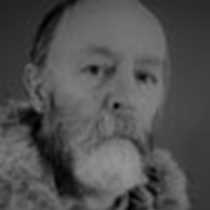Iona, Staffa & Outer Hebrides, Scotland
Iona has been called the "Cradle of Celtic Christianity" and the "Light of the West" so it was fitting that we should arrive on this tiny, enchanting island on a Sunday. St Columba and his followers arrived here in 563AD in little boats and we too arrived at the modern slip-way in our own little boats. A short walk took us to the delightful ruins of the old nunnery with its pink granite walls embedded with bunches of colourful flowers. In clear view was the square tower of Iona Abbey, still a living, working and worshipping non-denominational community. A Sunday service was timed for 10:30 which gave us ample time to explore the ancient, intricately carved and decorated buildings that surround this important ecclesiastical complex. Some of us chose to walk virtually the entire length of little Iona and enjoy the warm weather, soft sunshine and surprisingly varied flora and fauna.
During lunch our ship repositioned to the even smaller island of Staffa some way to the north of Iona. This island is uninhabited by people but is home to many birds including puffins, fulmar, kittiwakes and guillemots. But the main attraction to this rather cube-shaped rocky mass is its visually stunning geology. Consisting almost entirely of columnar basal in long, hexagonal lines, some straight and vertical but many bent and twisted and swept into fantastic and pleasing shapes and combinations, it is a delight to the eye to the hiker, ornithologist or geologist alike. Thanks to the continuing good weather and calm sea conditions we were able to carefully drive our Zodiacs into the narrow, 70 meter long "Fingal's Cave", the most obvious and most famous feature of the island. This cavernous chamber, often compared to a great Gothic cathedral, has wonderful acoustic properties as demonstrated by one Zodiac driver who revealed his talent for yodeling! Yet another first for Lindblad Expeditions.
From Staffa we turned west and north and set sail for the long trip out to our next destination, the archipelago of St Kilda out in the open Atlantic. However our day was not yet over. At 10:00PM, as the setting sun was glowing warm in the west over the island of Barra, a pair of orcas was spotted ahead of the ship. Carefully maneuvering slowly closer we had a magnificent display of a large male with a very distinct notched dorsal fin, playing with a smaller female for some twenty minutes before we had to pull reluctantly away and literally sail into the sunset. This had been a truly memorable first day in the ancient country of Scotland.
Call +1.800.397.3348 or contact your travel advisor




